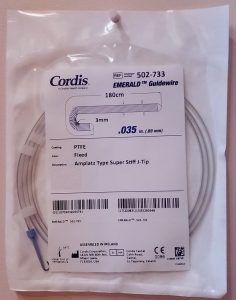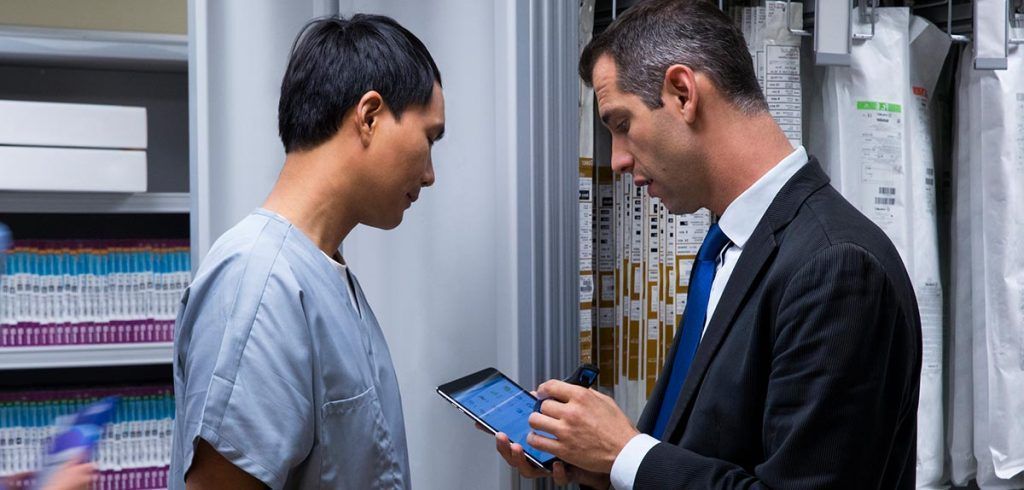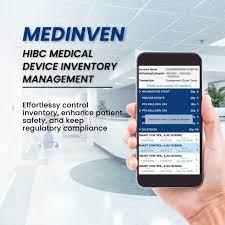Medical Device Inventory - Consignment & Trunk
Medical professionals opt for medical device inventory management system and sales approach for healthcare facilities. Consignment and trunk inventory management techniques stand out in this regard. They play a crucial role in delivering high-quality patient care and cutting costs in the rapidly evolving healthcare sector. These techniques over benefits like streamlined operations, reduced wastage, and improved patient outcomes. This article delves into the significance of medical device inventory and provides insights into efficient management of both consignment and trunk inventory.

Importance of Medical Device Inventory Management
A vital component of patient diagnosis, treatment, and overall healthcare delivery, medical devices are essential assets. To minimize stockouts, lower inventory carrying costs, stop the waste of expired products, and guarantee that important medical equipment is available when needed, effective inventory management is crucial. Healthcare institutions may simplify their operations, increase patient safety, and boost overall effectiveness with a well-organized medical device inventory system.
Consignment Inventory Management

An advantageous partnership between a healthcare institution and a medical equipment provider is consignment inventory management. According to this paradigm, the provider retains ownership of the medical devices up to the point at which the healthcare institution uses or consumes them. This strategy reduces the possibility of having too much inventory and gives the institution free access to a variety of medical gadgets.
Effective Strategies for Consignment Inventory Management:
- Regular Communication with Suppliers: Establish clear lines of contact with suppliers to enable a seamless flow of information about stock levels, product changes, and expiration dates. Communicate with suppliers often. Review consignment agreements often to make sure they meet the needs of the institution.
- Watch Consumption Patterns: The exam examines previous data and consumption trends to correctly predict future demand. This study ensures that the appropriate amount of medical equipment is always accessible by preventing problems of overstocking and understocking.
- Management of Expiration Dates: Consignment merchandise frequently has a shelf life. Use the first-in, first-out (FIFO) strategy to ensure that medical equipment with the earliest expiration dates is utilized first, lowering the possibility of product waste.
Trunk Inventory Management

Trunk inventory, also known as stock or on-hand inventory, refers to the medical equipment stored on-site at the healthcare facility. Trunk inventory management is essential to guarantee the availability of critical devices for immediate use and emergencies.
Effective Strategies for Trunk Inventory Management:
- Categorize Inventory: Organize trunk inventory into categories based on device type, criticality, and usage frequency. This categorization helps streamline inventory access and reordering processes, making it easier for staff to locate the required medical devices quickly.
- Set Par Levels: Determine par levels for each category of medical devices based on historical consumption data and average demand. Par levels indicate the minimum quantity that should be maintained in stock at all times, ensuring there are no stockouts during emergencies.
- Regular Auditing: Conduct routine audits of trunk inventory to identify obsolete or expired items. Such goods should be taken out of stock to maximize storage space, avoid inadvertent usage, and improve patient safety.
First and foremost, it’s essential to brainstorm potential worst-case scenarios that could unfold in your workplace. Natural and civil emergencies are common to all workplaces, so conducting a thorough risk assessment is a priority. This identifies specific workplace-related risks and unforeseen circumstances is crucial.
Customize your plan to suit your workplace’s unique characteristics, as each environment poses distinct risks that could lead to emergencies. Considering the individual logistical considerations in handling emergencies ensures a tailored approach to preparedness. While workplace emergency plans can’t be a one-size-fits-all solution, they should all encompass core features aimed at safeguarding lives and maintaining business continuity.
Utilize Medical Device Inventory Management Software
Nowadays, hospital inventory management has been significantly transformed by technology. Therefore, you should consider adopting a robust inventory management system that leverages data from both trunk and consignment inventories. Not only does this system automate reordering, tracking, and expiration date monitoring, but it also reduces manual errors and improves overall efficiency.
The Medinven HIBC Medical Device Inventory app for iPhone and iPad is compatible with Scanfob® and idChamp® brand RFID readers, supporting UHF and NFC technologies. Contact Serialio.com for a tailored solution that meets your healthcare facility’s unique needs.
Whether you’re well-versed in encoding HIBC or need expert assistance, or even if you’re seeking customized tag data formats, our team is here to craft the perfect Medinven iPad app solution just for you. Don’t miss out – embrace efficiency and precision like never before!

Staff Training and Accountability
Effective administration of the inventory of medical devices depends on a competent and responsible workforce. Hold frequent training sessions to inform personnel about the value of inventory management, the safe use of medical equipment, and compliance with inventory management procedures. Additionally, provide those in charge of inventory defined roles and duties to encourage responsibility and ownership.
Conclusion
Medical equipment inventory management is a challenging but crucial part of running a healthcare facility. Inventory control may be greatly enhanced by employing practical techniques, including consistent communication with suppliers, keeping track of consumption trends, and using inventory management software. Categorizing trunk inventory, establishing par levels, and carrying out frequent audits are all crucial for smooth operations. Healthcare facilities may improve patient care, reduce waste, and ensure that essential medical items are accessible when needed by maximizing their inventory management of medical equipment. A step toward creating a future healthcare system that is efficient and sustainable is using contemporary inventory management techniques.

